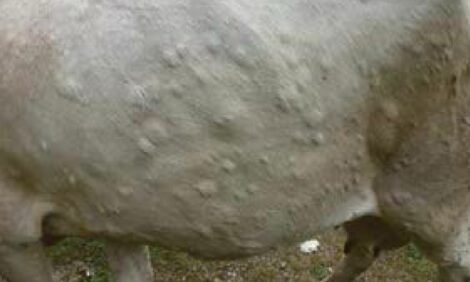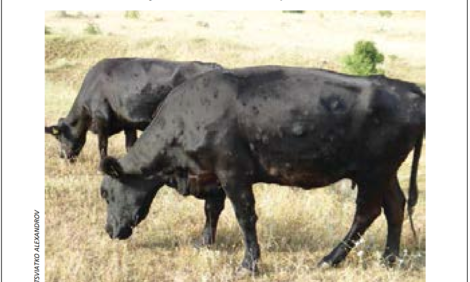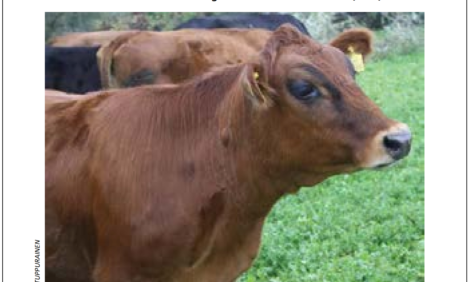



Lumpy skin disease: Lab confirmation of suspected cases & available diagnostic
Learn more about lumpy skin disease (LSD)Editors note: The following content is an excerpt from Lumpy Skin Disease: a field manual for veterinarians which is designed to enhance awareness of lumpy skin disease and to provide guidance on early detection and diagnosis for private and official veterinary professionals (in the field and in slaughterhouses), veterinary paraprofessionals and laboratory diagnosticians.
Virus Detection - Basic diagnostic tests
National reference laboratories providing diagnostic services for LSD should participate in the annual inter-laboratory proficiency testing trials organized by the international reference laboratories or other appropriate institutes.
Several highly sensitive, well-validated, real-time and gel-based PCR methods are available and widely used to detect the presence of CaPV DNA, e.g. Bowden et al., 2008; Stubbset al., 2012; Ireland & Binepal, 1998; Haegeman et al., 2013; Tuppurainen et al., 2005; Balinsky et al., 2008. These molecular assays cannot differentiate between LSDV, SPPV and GTPV, nor do they indicate whether or not the virus is still infectious. In general, performance of these tests is excellent. Electron microscopy examination can also be used for primary diagnostics although it is uncommon. Live virus can be isolated using various cell cultures of bovine or ovine origin. Surveillance of an infectious virus in different matrixes is described by EFSA Scientific Opinion on lumpy skin disease (EFSA, 2015).
Differentiating a virulent from an attenuated LSDV strain
If characteristic clinical signs of LSD are detected in cattle vaccinated with vaccine containing attenuated LSDV, molecular assays are available to determine if the causative agent is the virulent field strain, or if the vaccine itself is causing an adverse reaction in vaccinated animals (Menasherow et al., 2014; Menasherow et al., 2016) . Alternatively, sequencing of appropriate genes or gene fragments can be carried out (Gelaye et al., 2015).
Differentiation between LSDV, SPPV and GTPV
Sometimes, clinical signs of LSD are detected in cattle vaccinated with vaccine containing attenuated SPPV or GTPV. In such cases a check should be made on whether the vaccine is offering protection or not, and whether the clinical signs are caused by the virulent field LSDV. Sometimes, although rarely, the SPP vaccine virus itself may cause adverse reactions.
Species-specific PCR methods can differentiate between LSDV, SPPV and GTPV (Lamien et al., 2011a; Lamien et al., 2011b; Le Goff et al., 2009; Gelaye et al., 2013). Species-specific assays are also valuable tools if typical clinical signs of LSD are detected in wild ruminants in a country where all capripox members, LSD, SPP and GTP are endemic.
Recently, a method allowing the differentiation of eight pox viruses of medical and
veterinary importance was published (Gelaye et al., 2017). This can differentiate between LSDV, SPPV and GTPV, and also between LSD, bovine papular stomatitis, pseudocowpox and cowpox viruses.
Detection of antibodies
In general, the immune status of a previously infected or vaccinated animal cannot be directly related to serum levels of neutralizing antibodies. Seronegative animals may have been infected at some point and antibody levels do not always rise in all vaccinated animals. The levels of neutralizing antibodies start to rise approximately one week after detection of clinical signs, and affected animals reach the highest antibody levels approximately two to three weeks later. The antibody levels then begin to decrease, eventually dropping below detectable amounts. During ongoing outbreaks, most of the infected animals seroconvert and serum samples can be tested using serum/virus neutralization, immunoperoxidase monolayer assay (IPMA) (Haegeman et al., 2015) or indirect fluorescent antibody test (IFAT) (Gari et al., 2008). It is highly likely that an LSD ELISA will also become commercially available soon.
During the inter-epizootic periods (i.e. the quiet periods/years between epidemics), serological surveillance is challenging because long-term immunity against LSDV is predominantly cell-mediated, and currently available serological tests may not be sufficiently sensitive to detect mild and long-standing LSDV infections.
Role of the National Reference Laboratory
Rapid laboratory confirmation is essential in the successful control of an LSD outbreak. Thus, in all affected or at-risk countries, diagnostic capacity to carry out primary detection of LSDV should be in place so that control and eradication measures can be implemented
without delay.
Reference:
Tuppurainen, E., Alexandrov, T. & Beltrán-Alcrudo, D. 2017. Lumpy skin disease field manual – A manual for veterinarians. FAO Animal Production and Health Manual No. 20. Rome. Food and Agriculture Organization of the United Nations (FAO). 60 pages.






